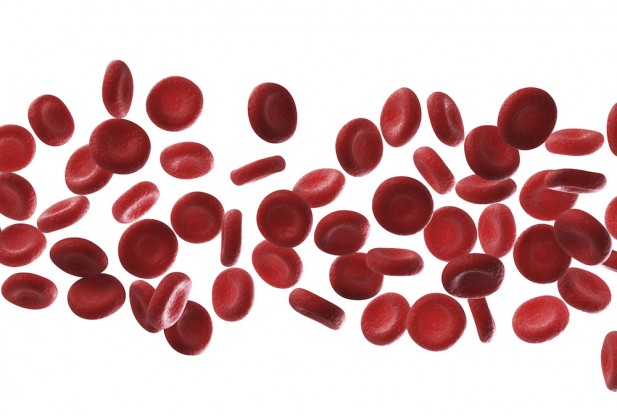
© Thinkstock
There's a serious supply-and-demand problem when it comes to blood transfusions: Patients are in constant need of the bodily fluid, which delivers oxygen and nutrients to the cells, but because they need a specific type, hospitals and blood banks often experience shortages.
Fortunately, chemists from the
University of British Columbia and colleagues from the Center for Blood Research
have created an enzyme that could potentially solve this problem by cutting off the antigens (sugars) found in Type A and Type B blood to make it more like Type O, which is universal and can be given to patients regardless of their blood types.UBC postdoctoral fellow David Kwan, lead author of a new
Journal of the American Chemical Society study detailing the research, explained in a statement that their "mutant enzyme" is "very efficient" at cutting off antigens in A and B blood, and "much more proficient" at removing the A-antigen subtypes that the parent enzymes tend to struggle with.
Using directed evolution to remove blood antigensKwan, associate professor Jayachandran Kizhakkedathu, chemistry professor Steve Withers and their fellow researchers created the enzyme using a new technology known as directed evolution. In this method, mutations are inserted into the gene which codes for the enzymes, then selecting the mutants which are the most effective at cutting the antigens.
"The defining difference between A, B and O blood types is the presence of slightly different sugar structures on the outside of the red blood cells of each type. Type A and B blood cells each have a single additional sugar attached to their surface (N-acetylgalactosamine and galactose respectively) beyond that present on O type red blood cells," co-author Stephen G. Withers, a professor in the UBC Department of Chemistry, explained to redOrbit via email.
"The idea of converting blood types by enzymatic removal of blood group antigens using specific sugar hydrolysing enzymes (glycosidases) has been around since the early 1980s, but a major limitation has always been the efficiency of the enzymes that can do this: impractically large amounts of enzyme were needed," he added. "Our lab specializes in the mechanistic analysis and the engineering of glycosidases and has had considerable success at increasing rates of several of these enzymes through directed evolution."
Withers added that this directed evolution is a process that essentially "evolves" enzymes in the laboratory, doing the same thing that can be accomplished through natural selection, but doing it far more quickly than would ordinarily happen. He and his colleagues decided to apply this approach to increasing the activities of enzymes capable of removing A and B antigens.
Promising research, but not quite ready for clinical useOver the span of five generations, the enzyme become 170 times more effective, the authors said. Using the enzyme, they were able to remove most of the antigens in A and B blood, but they emphasize that before the technique can be used in clinical settings, the enzyme would have to capable of removing all of the antigens. This is due to the sensitivity of the immune system, and the fact that even trace amounts of residual antigens could trigger a response.
"As O-type blood is the universal donor type, there is high demand for O-type blood resulting in a shortage of supply. It's possible to alleviate this demand and the resulting shortage if we have a means of converting A, B, and AB-type blood into a universal donor type," Withers said, noting that "before our enzyme can be used clinically... further improvements by directed evolution will be necessary to effect complete removal of antigens."
"In this way we hope to be able to generate one or more enzymes that can be used to efficiently convert A or B blood to a generally acceptable type just like O. In practical terms this will take some time to come to fruition," he said. "What we have done so far is to show that it is feasible to make these enzymes more efficient. We now need to broaden their abilities a little more so that they can handle all A-types. If we can do this, then the process will have to go through the lengthy and very important safety approval process."
Ultimately, Withers said that he envisions using the technique to pre-treat A or B type blood on an as-needed basis whenever hospitals or blood banks are faced with a shortage of compatible blood. However, he noted that it has taken a long time to this point, as he and his colleagues have been working on this specific process for roughly five years, and their work was built upon a foundation of more than three decades of basic research in the field.
"I think the main take-home message is that it should be feasible to substantially improve the activities of enzymes to be used in antigen removal through methods of directed evolution, thereby decreasing the cost of the process," he said. "We are not quite there yet, but the route forward is clear and that involves the evolution of the enzyme further to better cleave the other major sub-types of A blood."
of being a secret cancer cure? After several blood transfusions were revealed to have eliminated the cancer?